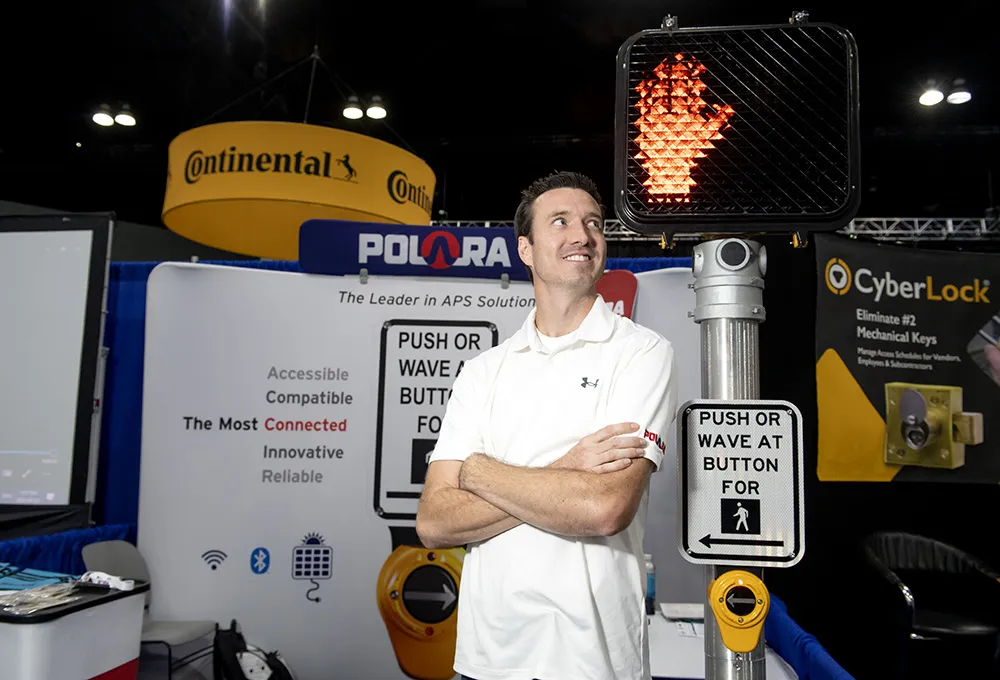The Santa Clara Valley Transportation Authority (VTA) is showing conference attendees how its Smart Stop technology can tell bus drivers that someone is waiting at a particular stop, improving the rider experience while saving fuel costs.
The Smart Stop demonstration is designed to highlight Vehicle to Infrastructure (V2I) and Vehicle to Vehicle (V2V) solutions using dedicated short range 5.9 GHz Wi-Fi communications. It was built in partnership with Renesas Electronics America, a semiconductor supplier, a
June 15, 2016
Read time: 2 mins

The 1791 Santa Clara Valley Transportation Authority (VTA) is showing conference attendees how its Smart Stop technology can tell bus drivers that someone is waiting at a particular stop, improving the rider experience while saving fuel costs.
The Smart Stop demonstration is designed to highlight Vehicle to Infrastructure (V2I) and Vehicle to Vehicle (V2V) solutions using dedicated short range 5.9 GHz Wi-Fi communications. It was built in partnership with2266 Renesas Electronics America, a semiconductor supplier, and eTrans Systems, a developer of software for connected and automated vehicles.
According to the agency, bus stops can be crowded and confusing when serving multiple routes, and bad weather can obscure waiting passengers from the driver. Passengers can use an app on their smartphone or a touch screen at a kiosk to indicate they are waiting for a particular bus. The request is then passed to a road side unit that transmits the request to the approaching bus's on-board unit. An audible and visual alert notifies the driver, and the passenger is notified via smartphone. If a bus approaches a stop that doesn't have a passenger waiting, the driver can continue on the route without stopping--saving time and fuel. At the same time, safety is improved by minimizing the need to exit and enter traffic.
"VTA is looking for new and innovative ways to improve the customer experience when taking transit," said Gary Miskell, VTA's CIO, in a press release. "Smart Stop provides customers with a quick and simple way to keep informed on their trip."
A mock bus stop will be set up Wednesday between 10am and 3:30pm off Viola Avenue next to the convention center. Conference attendees are encouraged to stop by and hail an approaching bus.
VTA is also demonstrating a dedicated short range communications (DSRC) solution from Renesas Electronics that uses a combination of sensor fusion, 3D surround view and V2X technologies to provide driver warnings for collisions, red lights and road construction. New regulations mandate that V2X technology be integrated with existing vehicle safety features to optimize driver safety and fuel efficiency, and many auto manufacturers are already developing solutions to meet compliance.
The Smart Stop demonstration is designed to highlight Vehicle to Infrastructure (V2I) and Vehicle to Vehicle (V2V) solutions using dedicated short range 5.9 GHz Wi-Fi communications. It was built in partnership with
According to the agency, bus stops can be crowded and confusing when serving multiple routes, and bad weather can obscure waiting passengers from the driver. Passengers can use an app on their smartphone or a touch screen at a kiosk to indicate they are waiting for a particular bus. The request is then passed to a road side unit that transmits the request to the approaching bus's on-board unit. An audible and visual alert notifies the driver, and the passenger is notified via smartphone. If a bus approaches a stop that doesn't have a passenger waiting, the driver can continue on the route without stopping--saving time and fuel. At the same time, safety is improved by minimizing the need to exit and enter traffic.
"VTA is looking for new and innovative ways to improve the customer experience when taking transit," said Gary Miskell, VTA's CIO, in a press release. "Smart Stop provides customers with a quick and simple way to keep informed on their trip."
A mock bus stop will be set up Wednesday between 10am and 3:30pm off Viola Avenue next to the convention center. Conference attendees are encouraged to stop by and hail an approaching bus.
VTA is also demonstrating a dedicated short range communications (DSRC) solution from Renesas Electronics that uses a combination of sensor fusion, 3D surround view and V2X technologies to provide driver warnings for collisions, red lights and road construction. New regulations mandate that V2X technology be integrated with existing vehicle safety features to optimize driver safety and fuel efficiency, and many auto manufacturers are already developing solutions to meet compliance.










